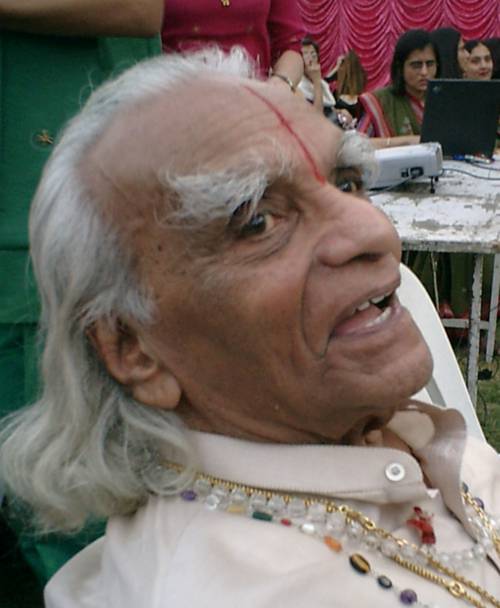
FAQ About B.K.S. Iyengar

Who was B.K.S. Iyengar?
B.K.S. Iyengar was a renowned Indian yoga teacher and author who played a pivotal role in bringing yoga to the global stage. Born in 1918, he established Iyengar Yoga, a style of yoga known for its emphasis on precision, alignment, and the use of props. Over his long career, he wrote several influential books on yoga, including "Light on Yoga," which has been translated into multiple languages.

What is Iyengar Yoga?
Iyengar Yoga is a style of yoga developed by B.K.S. Iyengar. It focuses on the precision and alignment of postures and often uses props like blocks, belts, and chairs to aid students in achieving the correct positions. This method is designed to systematically cultivate strength, flexibility, stability, and awareness, and is accessible to people of all ages and abilities.

What are some of B.K.S. Iyengar's notable books?
B.K.S. Iyengar was the author of many important books on yoga. Some of his most notable works include "Light on Yoga," "Light on Pranayama," and "Light on the Yoga Sutras of Patanjali." These books provide comprehensive guidance on the practice and philosophy of yoga and have been influential in popularizing yoga worldwide.

How did B.K.S. Iyengar become interested in yoga?
B.K.S. Iyengar was introduced to yoga by his brother-in-law, the famous yogi Krishnamacharya, when Iyengar was suffering from various health issues in his youth. Through dedicated practice, he was able to improve his health significantly, which fueled his passion to study and teach yoga for the rest of his life.

What inspired B.K.S. Iyengar to teach yoga outside of India?
B.K.S. Iyengar's journey into international teaching began when he was invited to Switzerland in 1954. His demonstration at a cathedral there and subsequent interaction with international audiences inspired him to teach yoga outside of India, thus playing a major role in its global spread. His teaching attracted a wide following, including many celebrities and academics, further boosting yoga's popularity globally.

What role did B.K.S. Iyengar play in the global popularization of yoga?
B.K.S. Iyengar is credited with popularizing yoga around the world through his teachings, yoga style, and books. He was one of the first yoga teachers to conduct yoga workshops and demonstrations internationally and used his writings to extensively educate people about the benefits of yoga. His style, Iyengar Yoga, became incredibly popular due to its accessibility and effectiveness.

What are the key principles of Iyengar Yoga?
The key principles of Iyengar Yoga include alignment, precision, and the use of props. Alignment refers to the correct positioning of the body in each pose, which helps to avoid injury and maximize the pose's benefits. Precision and detail are emphasized in every movement, and props are used to assist students in achieving proper alignment and depth in the pose, regardless of their level of ability.

How did B.K.S. Iyengar contribute to the academic study of yoga?
B.K.S. Iyengar contributed significantly to the academic and scientific understanding of yoga through his books, which are considered seminal texts in the study of yoga. Additionally, his systematic approach to teaching and practicing yoga lent itself to academic study, allowing for greater understanding and research into the physical, mental, and spiritual benefits of yoga.

Did B.K.S. Iyengar receive any awards for his contributions to yoga?
Yes, B.K.S. Iyengar received several prestigious awards for his contributions to yoga, including the Padma Shri in 1991, the Padma Bhushan in 2002, and the Padma Vibhushan in 2014, all of which are among the highest civilian honors conferred by the Government of India.

Is Iyengar Yoga suitable for beginners?
Yes, Iyengar Yoga is particularly suitable for beginners due to its focus on alignment and the use of props. The use of props allows individuals of all ages and fitness levels, including those with certain health conditions, to practice yoga safely and effectively by accommodating different levels of flexibility and experience.

How did B.K.S. Iyengar use props in yoga practice?
B.K.S. Iyengar introduced the use of props to make yoga accessible to everyone. Props such as blocks, belts, blankets, and chairs help practitioners perform poses correctly and safely, regardless of their level of flexibility or experience. This innovation enables even those with physical limitations to experience the benefits of yoga by helping with alignment and positioning.

What impact did B.K.S. Iyengar's teachings have on modern yoga?
B.K.S. Iyengar's teachings had a transformative impact on modern yoga by emphasizing detailed alignment and anatomical precision, making yoga safer and more accessible. His work also laid the foundation for therapeutic yoga, using his methods to heal and manage various physical ailments. His influences are evident in many modern yoga practices that incorporate alignment and mindfulness techniques.

Where did B.K.S. Iyengar establish his primary yoga institute?
B.K.S. Iyengar established his primary yoga institute, the Ramamani Iyengar Memorial Yoga Institute, in Pune, India in 1975. The institute, named in memory of his wife, serves as a leading center for the teaching and practice of Iyengar Yoga and attracts students from around the world.

What was B.K.S. Iyengar's philosophy on the connection between mind and body?
B.K.S. Iyengar's philosophy emphasized the deep connection between mind and body, advocating that physical alignment through yoga can lead to mental stability and spiritual balance. He believed that practicing yoga with mindful awareness could help individuals achieve overall well-being and harmony.

How is Iyengar Yoga different from other styles of yoga?
Iyengar Yoga differs from other styles of yoga primarily in its focus on alignment, use of props, and detail-oriented approach. Each posture is held for a longer period, allowing practitioners to explore and perfect their alignment. This style is methodical in exploring the potential of the poses, which can be more accessible than more dynamic forms of yoga.

Did B.K.S. Iyengar have any famous students?
Yes, B.K.S. Iyengar taught many notable students over his career, including author Aldous Huxley, violinist Yehudi Menuhin, and actress Annette Bening. His teachings influenced a wide array of people from various professions, enhancing the reach and impact of yoga globally.

When did B.K.S. Iyengar pass away?
B.K.S. Iyengar passed away on August 20, 2014, at the age of 95. His legacy continues to live on through his books, teachings, and the widespread practice of Iyengar Yoga around the world.

How has Iyengar Yoga influenced therapeutic applications in yoga?
Iyengar Yoga has greatly influenced the therapeutic applications of yoga thanks to its focus on posture, alignment, and the use of props to assist in practice. This approach allows individuals with different injuries or health conditions to practice safely and effectively, providing specific therapeutic benefits tailored to their needs.

What was B.K.S. Iyengar's approach to teaching yoga?
B.K.S. Iyengar's approach to teaching yoga was characterized by meticulous attention to detail, precision in alignment, and the use of props to aid practice. He believed in making yoga accessible to everyone, and his methods empower students to practice with a deep attentiveness to both body and mind, enhancing personal development and well-being.

What are some common misconceptions about Iyengar Yoga?
Common misconceptions about Iyengar Yoga include the belief that it is only for beginners or those with physical limitations. While Iyengar Yoga is accessible and uses props to aid various practitioners, it also offers challenges for advanced students seeking to deepen their practice. Its focus on detail and posture can offer significant benefits regardless of a practitioner's level of experience.
